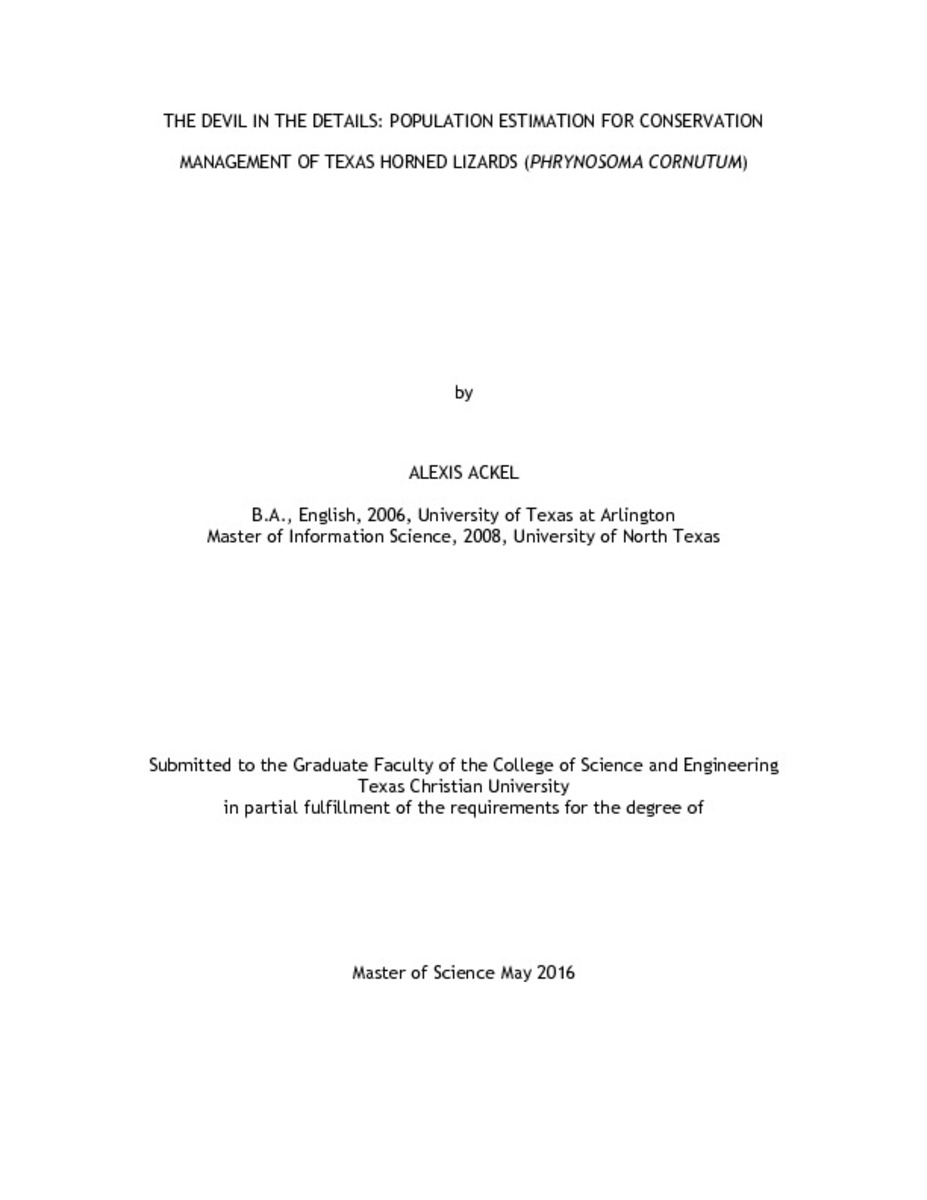The devil in the details: population estimation for conservation management of Texas horned lizards (Phrynosoma cornutum)Show full item record
| Title | The devil in the details: population estimation for conservation management of Texas horned lizards (Phrynosoma cornutum) |
|---|---|
| Author | Ackel, Alexis Nicole |
| Date | 2016 |
| Genre | Thesis |
| Degree | Master of Science |
| Abstract | Population estimation is an important monitoring technique for threatened and endangered species as a means of informing management decisions and gauging conservation efforts. However, many threatened species exhibit crypticism in behavior and appearance that confound detection and thus impede accurate population estimation. The Texas horned lizard (Phyrnosoma cornutum) is a cryptic reptile with a broad distribution throughout the Southwestern U.S., including most of Texas. They have experienced putative declines throughout much of their range over the last several decades but there is currently a paucity of population data to inform their conservation. We censused for P. cornutum in two small Texas towns in order to investigate effective sampling and population estimation methods for rare and cryptic species. Capture-Mark-Recapture (CMR) is one of the oldest and most commonly employed methods and has traditionally relied on the physical capture and permanent marking of individuals to identify recaptures. Non-invasive genetic sampling of hair, scat, or feathers represents an increasingly popular alternative to physical tagging since it poses less risk to study organisms, requires less effort, and is more cost effective than traditional sampling schemes. However, it has not been widely used in reptile populations. Thus, we conducted both traditional capture-based (marking with PIT tags) and non-invasive genetic sampling (via scat) and compared population estimations as modeled by the programs MARK and CAPWIRE.We also investigated effective population size within the study area as well as correlations between scat counts and lizard abundance. We concluded that non-invasive genetic sampling represents a viable alternative to traditional sampling for Texas horned lizards and potentially other cryptic reptiles. Simple scat counts show promise as a rapid censusing method for establishing baseline abundance but additional research on scat deposition and persistence in the study area and the applicability of these relationships to other habitat types and regions is needed.--Abstract. |
| Link | https://repository.tcu.edu/handle/116099117/10911 |
| Department | Environmental and Sustainability Sciences |
| Advisor | Williams, Dean A. |
Files in this item
This item appears in the following Collection(s)
- Masters Theses [4144]
© TCU Library 2015 | Contact Special Collections |
HTML Sitemap



